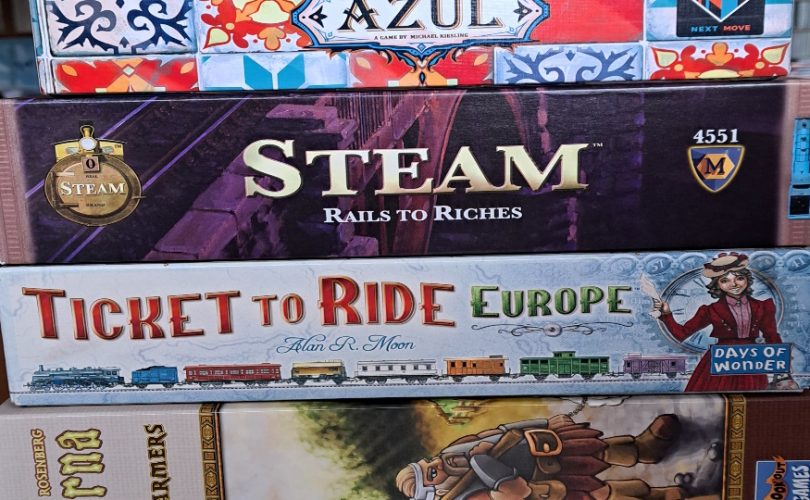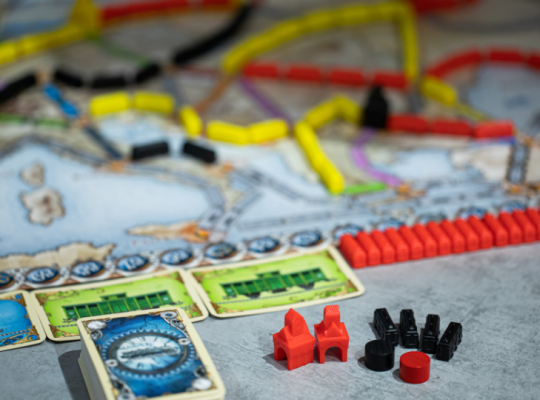By popular request, here’s a short guide to all the lovely board games mentioned in The Little Board Game Cafe.
Can’t Stop
This is the first game Emily plays in the book, and it’s an easy first game for anyone who’d like to get into board games. It’s a ‘push your luck’ game involving rolling dice and advancing up columns. It sounds easy and it is; the skill is in knowing when to end your turn. If you fancy trying this game, you can play it on the website Boardgamearena.com and you can also buy a physical copy on Amazon.
A La Carte
A La Carte is such a cute game. It comes with little pans, recipe cards and pots of ingredients. You have to assemble the ingredients in the pan and you get victory points for each completed recipe. But if your stove is too hot or you add too much salt to your dish, you’ll ruin your food and so you won’t score. You can often pick up copies of this game on eBay.
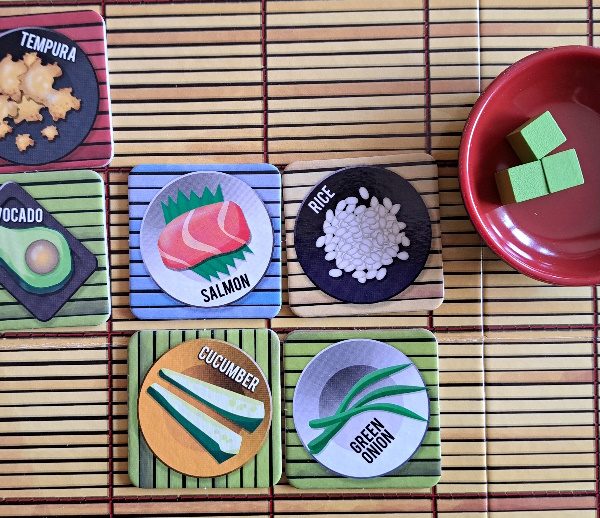
Wasabi
Like A La Carte, in Wasabi you’re collecting ingredients to create recipes. You draw cards into your hand and lay them on the board creating sets of ingredients to fulfil your recipe requirements. This is a game I particularly enjoy. Wasabi is out of print, so you’re unlikely to find it in a games shop, but you can sometimes pick up a second hand copy, and there’s a new edition coming out in a year or two.
Agricola
Agricola is one of the more complicated games mentioned in The Little Board Game Café. It’s a farming game. You’re planting fields and breeding animals, as well as building rooms in your house and growing your family. The more people – or meeples – in your family, the more food you need, so you have to raise more animals and grow more crops. I love this game! You can try it virtually on boardgamearena.com or buy a physical copy from most games shops.
Catan
Catan (also known as Settlers of Catan or Settlers) is a fun yet strategic game where you collect and spend resources to build roads, settlements and cities on the island of Catan. It’s easy to learn and suitable for younger players. Again, you can try this on BoardGameArena or buy a copy from most good games shops.

Ticket to Ride
Ticket to Ride is a classic! You collect different sets of coloured train cards to build railways across the USA. There are loads of different editions; the picture shows the Europe edition. Fans of the game have created their own versions too. I made one for Hermi once – all the destinations were places we’d been on our dates. You can buy this game in Waterstones and in games shops. If you’d prefer to play online, it’s on BoardGameArena and there’s also an excellent app.
Carcassonne
Carcassonne is a tile-laying game based on the famous French fortified city. Again, it’s fun and easy to learn if this is your first foray into board gaming. You can pick up a copy at Waterstones and at most games shops and it’s also available on the BGA website.
Caverna
Caverna is very similar to Agricola; in fact, it’s by the same designer, Uwe Rosenberg. You perhaps haven’t heard of him, but he’s very famous in board games circles. Like the board game equivalent of Stephen King or Hilary Mantel. In Caverna, like in Agricola, your meeples are farmers, but they live in a cave instead of a house, there are rubies in the cave and there are cute little donkeys too! Again, this is an easy one to find in the shops, but is also available on BGA.
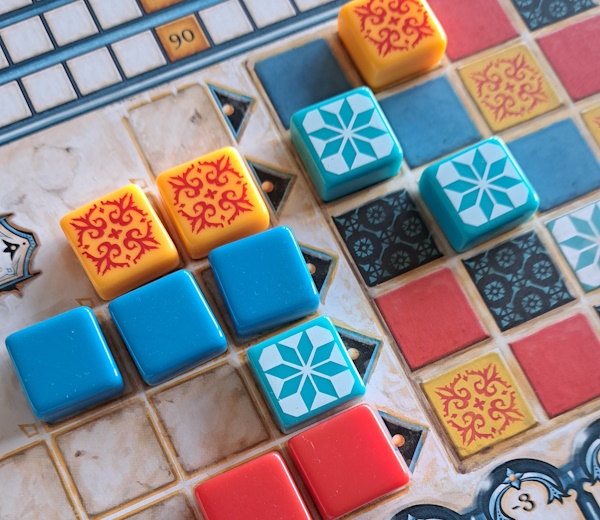
Azul
The game Azul is inspired by the stunningly beautiful decorative tiles of the Alhambra palace in Granada. It’s another tile-laying game. The rules are easy to learn, but it’s very strategic. You can play this one on BGA and although I love BGA, I have to say that in the case of this game, you’d be missing out because the tiles in the physical game are gorgeous – really pretty and lovely to handle too.
Power Grid
Power Grid is another classic game based upon a map. You’re linking cities as you do in Ticket to Ride, but the aim this time is to supply those cities with power. You can generate your power with oil, coal, nuclear or green energy power stations. I love this game although when I’m playing, I sometimes feel I need a calculator as there can be a lot of number crunching to work out the best strategy. Sadly, this one isn’t on BGA, but you can pick up copies on eBay.
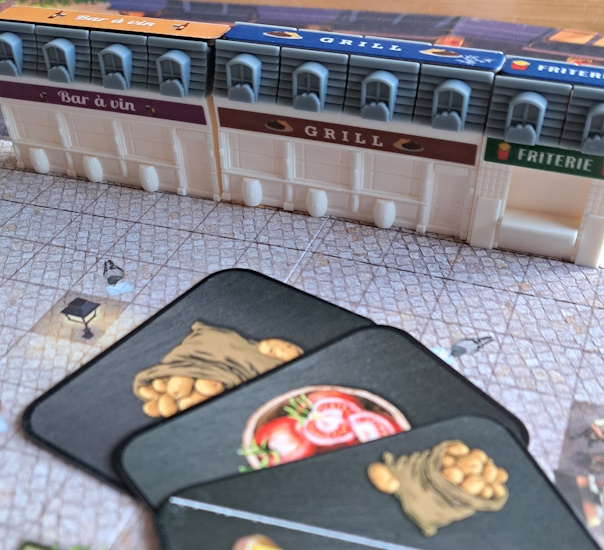
Dinner in Paris
Dinner in Paris is the cutest little game. It has little buildings representing different types of French eateries; there’s a friterie and a boulangerie and so on. You collect ingredients to build these different eateries, but you can also build terraces which are worth extra points. Again, you can play on BGA if you’d like to try this game, but it’s worth buying a physical copy because the buildings are so cute.
Steam
Another game about building railways. In Steam, you have to build tracks and make the most profitable deliveries. Unfortunately this isn’t on BGA, but secondhand copies are available relatively cheaply online. Alternatively, you could try Railways of the World on BGA which is very similar.
Patchwork
Another game by the famous Uwe Rosenberg, but this one is very different from Agricola and Caverna. This is a two player game where you’re competing to make a patchwork quilt using Tetris-like shapes. It’s available from most good games shops, is on BGA and there’s also a Patchwork app which costs around £3.
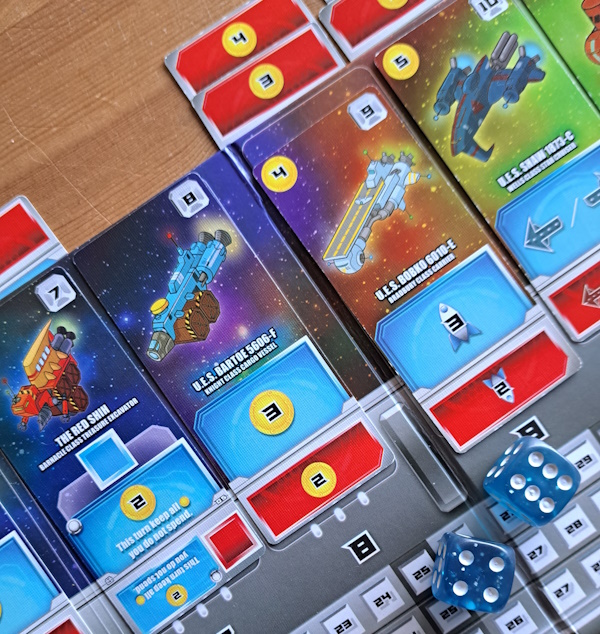
SpaceBase
This is one of my all-time favourites. I love SpaceBase because I like games that have an element of luck combined with an element of skill. Will I roll the right dice? Will the cards I want come up?
On a personal note, one of the cards has my husband Hermi’s name on it! (Hermi’s cousin, Mirosław Hermaszewski, was a Polish cosmonaut and the card is named after him!) You can play this game on BGA or pick up a copy in all good games shops!
Scotland Yard
A fun game suitable for children as well. One player takes on the role of Mr X, and secretly hotfoots it round London by tube, train and taxi. The other players are the detectives trying to hunt him down. Although this game isn’t available on BGA, it’s easy to find in shops including Waterstones.
I love all of these games which is why they got a mention in the book, but it’s by no means an exhaustive list of the games I like playing. Since writing the book, I’ve discovered some new favourites including Gizmos, It’s a Wonderful World and Factory Funner. And my all-time number 1 favourite game isn’t mentioned in the book at all. Wonder if anyone can hazard a guess as to what it is?

